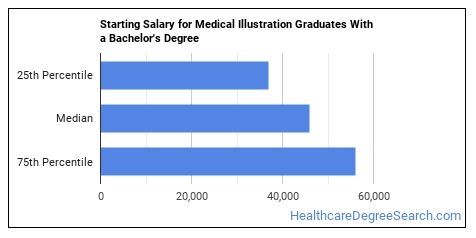

#Medical illustrator salary software#
Some firms often use custom software programs, so superior technical skills are crucial. Medical animators also have the ability to grasp advanced software programs that are common in the industry. In addition to a degree (or degrees) in these areas, medial animators and illustrators have advanced flash, 2D, 3D and 4D animation skills, as well as advanced 3D printing skills, and advanced drawing and design skills. Undergraduate degrees are also offered in these areas, so a double major and say, a graduate certificate is another option.

In addition to a degree in animation, illustration, digital art, visualization sciences, motion graphics, visual communications, digital design, or other related area, medical animators typically hold a master’s degree in medical illustration, medical art, scientific illustration, biological illustration, biomedical visualization, or other related area. Many medical animators and illustrators become authors and co-authors of journal articles and textbooks.īecause medical animation is a highly specialized field, medical animators must be highly educated. This includes use of 3D printers and materials applied to create custom prosthetic implants for patients affected by facial or body disfigurement.” There is a need for “interactive e-learning programs for patient education, student courseware, physician education and pharmaceutical/device sales training,” as well. Says EHC, medical animators may also specialize in “the creation of sculptured anatomical models and medical simulation trainers for teaching and practicing procedures. Medical-legal exhibits/mechanism of injury animation.

Augmented and virtual reality simulation.Medical animators can refine their focus in a particular “facet” of medicine such as: According to Explore Health Careers (EHC), medical animators must have the scientific and medical knowledge to interpret complex information, “distill it down, and communicate the story in a clear visual narrative that is accurate, educational, and engaging.” These specialized artists must work closely with scientists and physicians to produce visual content for the web, journals, film and television, interactive and mobile media, books, virtual reality, exhibits and demonstrative evidence for legal proceedings, journals, books, advertising, presentations, and magazines. The skills needed to excel in this field go beyond animation. Health and science organizations must keep pace with these advances so visualization specialists such as medical animators and illustrators are in high demand. Either way, the medical animation market is booming and the trend is expected to continue thanks to constant new discoveries, treatments, and technologies in science and medicine. Some estimates place the market at $514 million by 2024. The global medical animation market is expected to be worth $301.3 million by 2021.


 0 kommentar(er)
0 kommentar(er)
